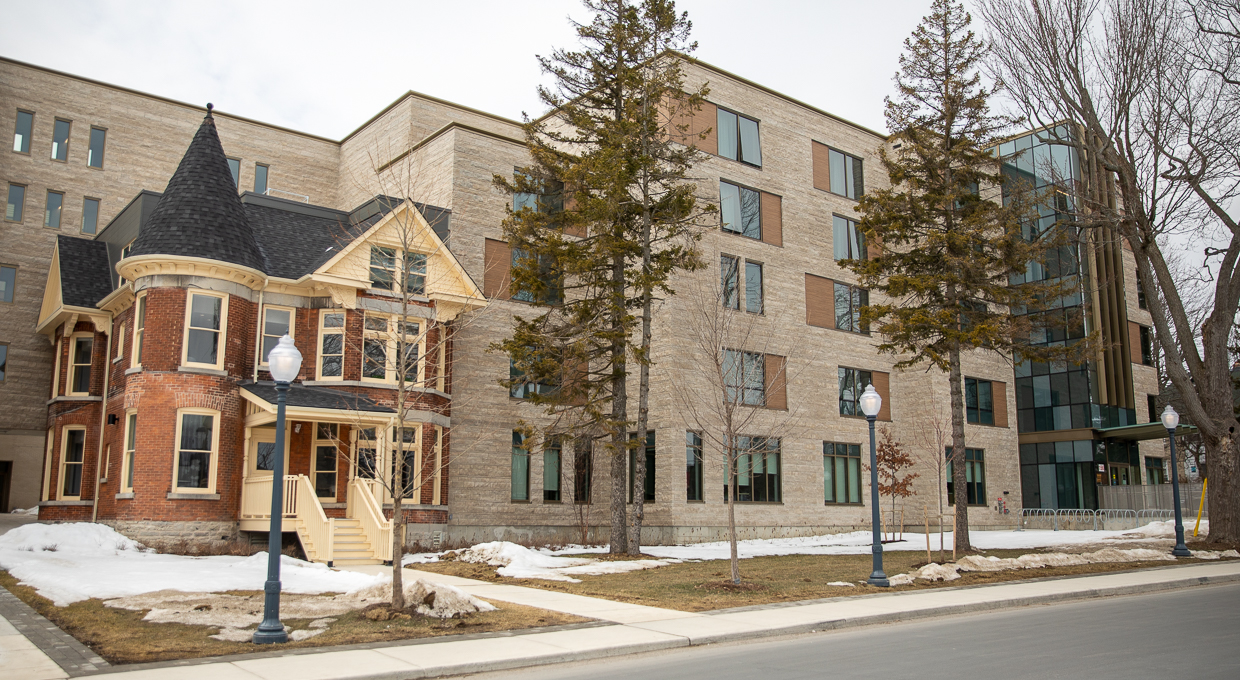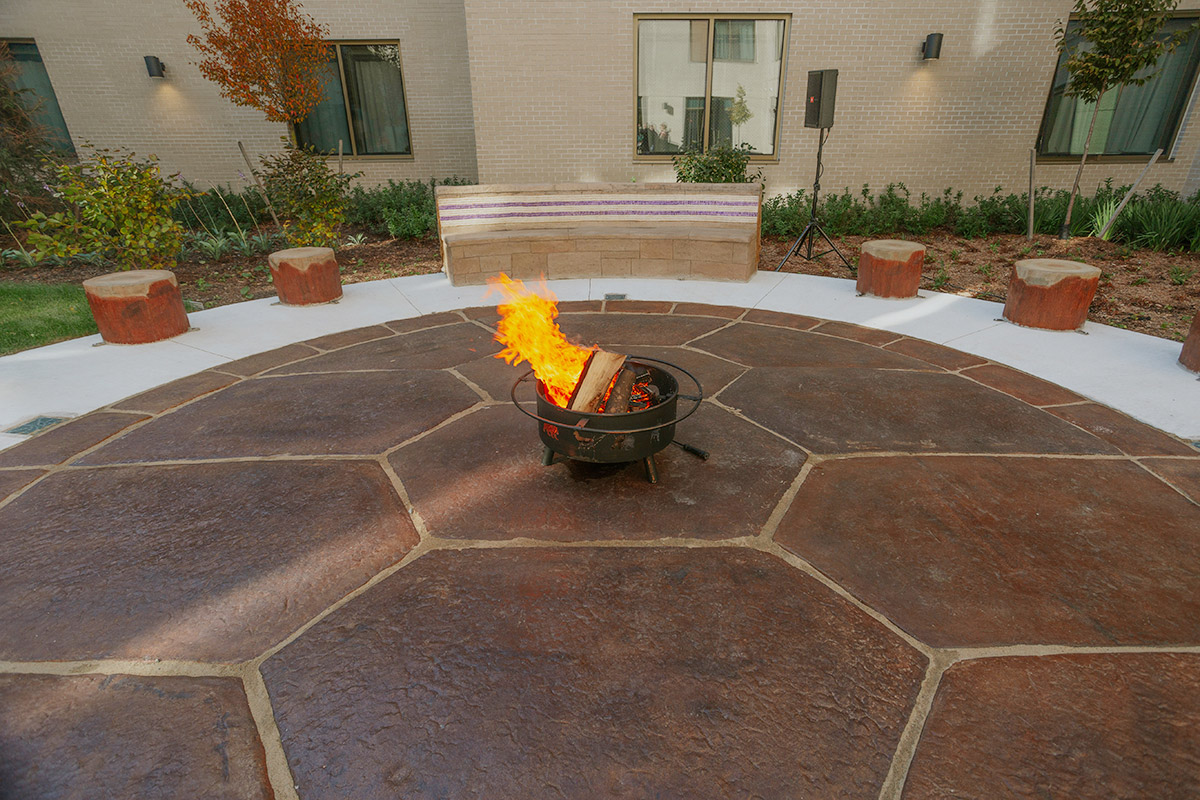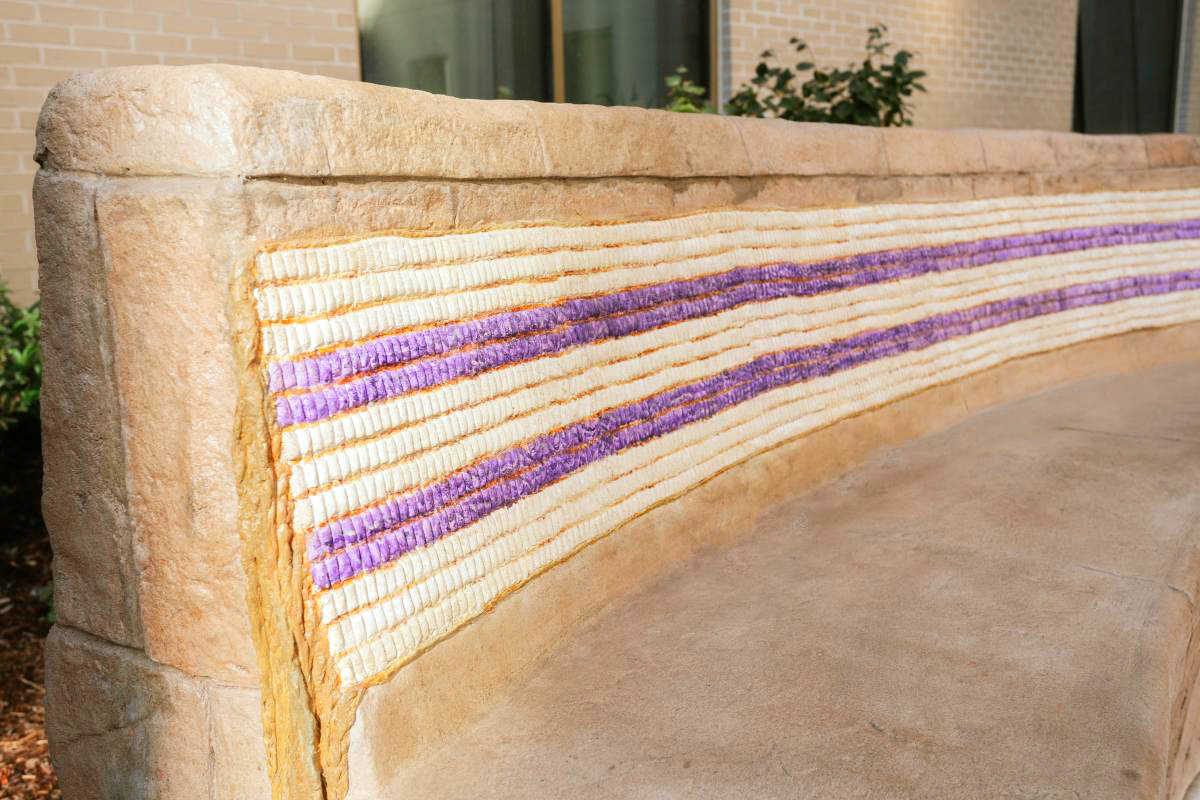Queen’s University: Setting a New Standard in Student Housing
Kingston, Ontario
Project Duration: 2020 – 2022
Client: Queen’s University
Services: Project Management
SPACING

Endaayaan – Tkanónsote Residence
Queen’s University in Kingston, Ontario, identified the need for additional housing to accommodate its growing population of more than 20,000 students.
The goal was to deliver 320 new beds across 11,800 m² by integrating two heritage homes into a new residence in alignment with Queen’s goals for accessibility, sustainability, and community engagement—creating a comfortable, safe, and welcoming place for students to live and thrive.
Scope
Tiree partnered with Queen’s University to provide end-to-end Project Management services for the new residence, ensuring it was delivered on schedule, on budget, and in line with academic priorities.
Project objectives included:
- Delivering a new student residence aligned with Queen’s University’s long-term strategic vision and Capital Master Plan
- Providing a safe, functional, and sustainable living environment that supports students’ social and academic needs
- Integrating specialized IT and AV systems to support a modern teaching, learning, and research environment
- Preserving and incorporating university-owned heritage homes into a modernized residence complex
- Upgrading mechanical and electrical systems to meet current safety standards and align with LEED sustainability requirements
- Reinforcing structural and seismic supports to extend the lifespan of the heritage homes
Construction began in 2020 at the onset of the COVID-19 pandemic, requiring the Tiree team to navigate supply chain disruptions, material and labour shortages, and price escalations—all while maintaining schedule and budget commitments. Postponing the project was not an option, as students were expected to arrive that September.
The project management team responded quickly by identifying solutions to expedite the procurement of long-lead materials and finishes, store materials in on-site shipping containers, and arrange off-site, temperature-controlled storage for specialized items. To minimize labour shortages due to illness, the team also implemented strict masking, sanitization, screening, and shift scheduling protocols.
Despite these challenges, the project was delivered on time and under budget. The team successfully incorporated inclusive features like accessible suites, multiple elevators, and amenities for service animals, in alignment with Queen’s accessibility mandate.
In support of the university’s net-zero emissions goal and to meet the globally recognized LEED Gold Standard, the project used recycled materials and incorporated high-efficiency windows and boilers, low-flow bathroom fixtures, energy-efficient lighting, and indoor and outdoor bicycle storage to support alternative transportation.
The design also improved envelope performance and featured drought-tolerant landscaping to reduce potable water use. These improvements resulted in a 47% reduction in greenhouse gas emissions and diverted 75% of construction materials from landfills.
Approach
Tiree kept the project on track amid disruptions with strategic communications, proactive risk management, and rigorous monitoring.
Our approach to creating accessible, sustainable, and community-oriented student housing included:
- Acting as the owner’s representative and advocate by coordinating with internal and external stakeholders, including faculty, facilities teams, and municipal partners
- Coordinating design change reviews with internal subject matter experts to align with Queen’s design standards
- Overseeing construction activities such as daily site visits, contractor coordination, issue resolution, and reporting
- Liaising with the City of Kingston to ensure compliance with applicable codes, regulations, and heritage preservation requirements
- Mitigating risk to minimize disruptions to project timelines, surrounding neighbourhoods, and campus operations
- Advancing accessibility, sustainability, and quality assurance throughout the project lifecycle
- Managing and securing all required regulatory approvals, permits, inspections, and certifications
- Overseeing financial processes, including invoice review, progress billings, and compliance with payment legislation
- Leading weekly project meetings, bi-weekly contractor status updates, and monthly Steering Committee sessions
- Hosting LEED-related meetings with Queen’s sustainability team
- Reviewing and recommending approvals for all project-related change orders
- Conducting post-occupancy evaluations to capture lessons learned and inform future developments on campus
Outcomes
Queen’s University’s Endaayaan – Tkanónsote residence opened on Albert Street in September 2022. The five-storey building houses 334 students and reflects Queen’s commitment to expanding and modernizing student living.
Meaning “home” in Anishinaabemowin (Ojibway) and Kanyen’kéha (Mohawk), the residence honours the Indigenous lands of the Anishinaabe and Haudenosaunee. A central courtyard, designed by local Indigenous artist Tehanenia’kwè:tarons (David R. Maracle), serves as a gathering space. Viewed from above, it resembles a turtle shell, symbolizing Mother Earth, and features stone benches engraved with the Two Row Wampum belt pattern, representing the first agreement between the Haudenosaunee and Dutch settlers.
Weaving together community, culture, and wellness, the residence includes a dedicated prayer room and a yoga and meditation space, offering students a supportive and inclusive home away from home.
Two of the original heritage homes were successfully integrated into the residence following the abatement of hazardous materials, updates to mechanical and electrical systems, and reinforcement of structural and seismic supports. A transparent construction process helped build trust with local residents and preserve the architectural character of the neighbourhood for future generations.
Through proactive communication, stakeholder coordination, and creative problem-solving, Tiree supported the delivery of Endaayaan – Tkanónsote, a residence that embodies Queen’s University’s commitment to inclusivity and sustainability—setting a new standard for the future of student housing.

Endaayaan – Tkanónsote Residence Courtyard

The Two Row Wampum Belt Stone Bench
